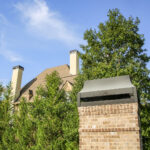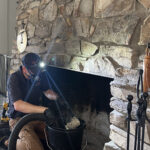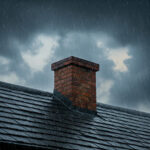Flashing: A Leading Cause of Chimney Leaks
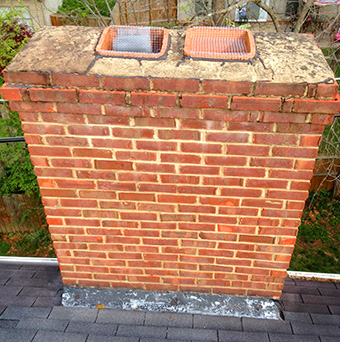 A masonry chimney can look beautiful and unscathed by weather conditions; all the while, it’s possible that the chimney flashing isn’t doing its job of keeping moisture out. Flashing is the sheet metal installed where the chimney and roof meet, and its purpose is to ensure that the connection is watertight. Many times, when a chimney is leaking, it’s because of flashing failure.
A masonry chimney can look beautiful and unscathed by weather conditions; all the while, it’s possible that the chimney flashing isn’t doing its job of keeping moisture out. Flashing is the sheet metal installed where the chimney and roof meet, and its purpose is to ensure that the connection is watertight. Many times, when a chimney is leaking, it’s because of flashing failure.
There are various reasons for a flashing problem:
- Installation is tricky, and sometimes the installer doesn’t get it right.
- The material that flashing is made with could be sub-par and may not last long.
- Sometimes an extreme weather condition such as high winds loosens the flashing or breaks it off.
- Flashing simply wears out over time, becoming corroded, rusted, broken, or chipped.
When flashing fails, it is usually not apparent right away. In fact, it’s common for a lot of damage to occur to the house before the problem is identified. When the chimney leaks as a result of flashing failure, the types of problems the homeowner will face include replacing rotten wood, repairing moisture damage in ceilings and walls, roof damage, attic damage, and repairing various kinds of structural damage. Making a periodic check from the attic of the roof where it meets the chimney is recommended, to avoid the high cost of repairs caused by an undetected flashing leak.
The way flashing is installed is a factor in how well it protects your chimney & fireplace from moisture. A method used universally for installing flashing utilizes two metal panel parts, though the type of metal used varies in different regions. Cost is a factor which can determine which metal is used. Aluminum and galvanized steel are common choices in the southern states; and the high-end installations use copper, which is the best type of flashing material available. In addition to being more durable than other metals, copper can easily be soldered to create a dependable watertight connection. Lead is a soft, easy-to-bend metal that is popular as a flashing material in the north. But the most important part of installation is not the material used but rather the competence of the installer.
These are the basic steps for installation of chimney flashing:
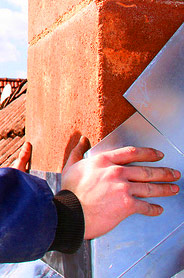 Step flashing or base flashing is installed first. It is placed underneath shingles and is bent upward in order to be flush against the masonry chimney. (The L-shaped step flashing panels are frequently found with cracks and holes, upon inspection by chimney professionals.)
Step flashing or base flashing is installed first. It is placed underneath shingles and is bent upward in order to be flush against the masonry chimney. (The L-shaped step flashing panels are frequently found with cracks and holes, upon inspection by chimney professionals.)- A metal piece called the “counterflashing” is installed next in the process. This piece is imbedded into the chimney mortar joints at the top and bends down over the base flashing, serving to cap it off.
- During installation, corners pose the biggest challenge; and corners are more vulnerable to leaking than other parts of chimney flashing. Even top quality work often requires at least a small amount of urethane caulking in order to complete the waterproofing process.
During chimney inspections, our professional technicians are careful to inspect the flashing and look for other types of moisture damage, as well.
Chimney Solutions, Inc.
1155 McFarland 400 Drive, Alpharetta GA 30004
Office 770-255-1300


